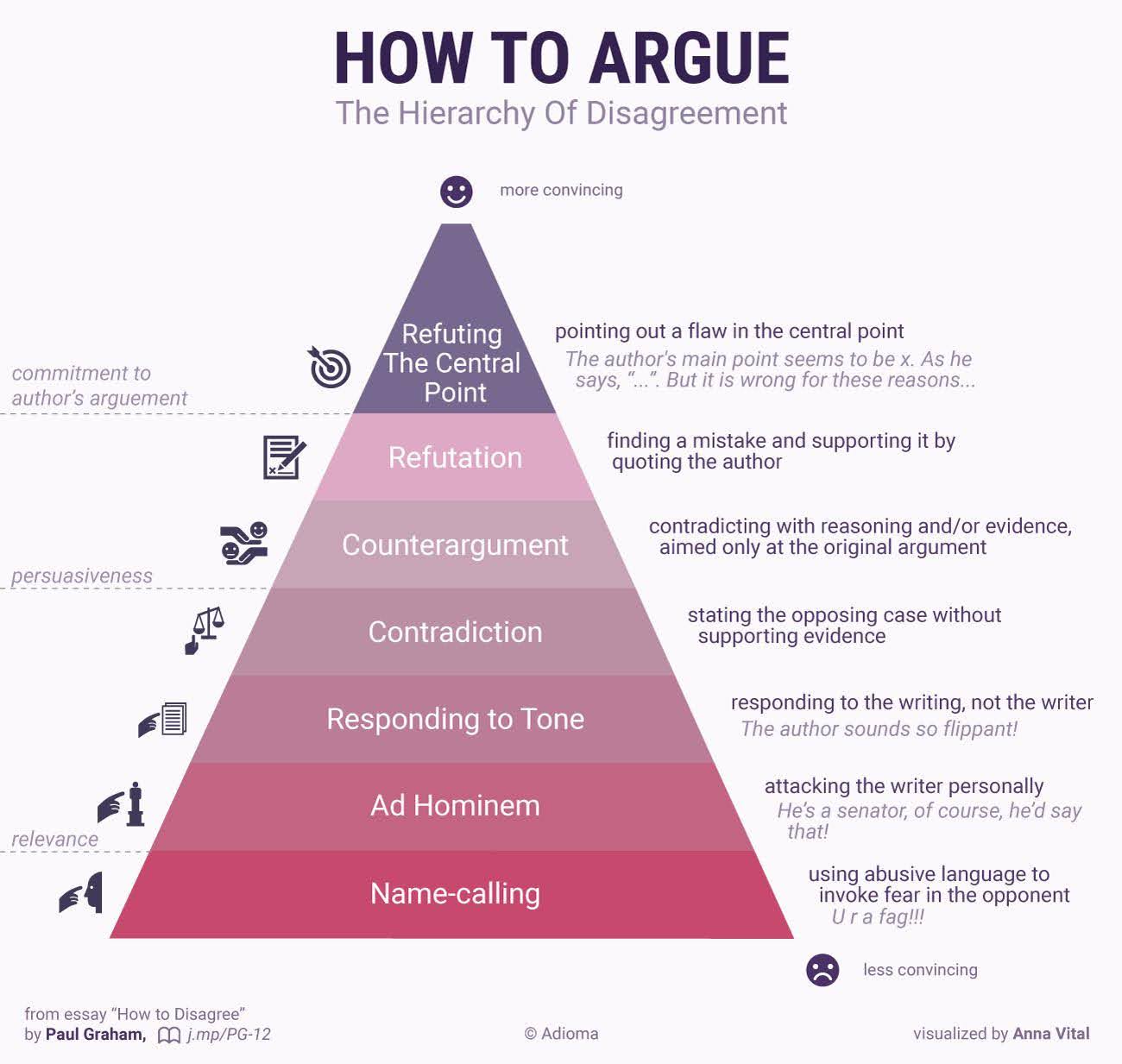How To Argue Hierachy
Updated on

Ever watched a brand argue online and thought, “Wow, they just lost me”? That’s because not all arguments are created equal. This chart inspired by Paul Graham’s “How to Disagree” perfectly visualizes that—from name-calling at the bottom to smart, evidence-based refutation at the top.
Marketing analysis
Marketers argue all the time—just not with insults. We argue with competitors, with customer objections, with the market. The smartest brands focus on refuting the central point of a problem, not just reacting emotionally.
Why it works
- Focuses on logic, not feelings
- Builds credibility and trust
- Keeps conversations productive
- Positions the brand as an expert
Examples
- Apple’s “Get a Mac” ads: countered PC’s central claim of utility with ease and creativity.
- Dollar Shave Club: refuted premium razor pricing, showing equal quality for less.
- Oatly: responds to dairy criticism with facts and wit, not hostility.